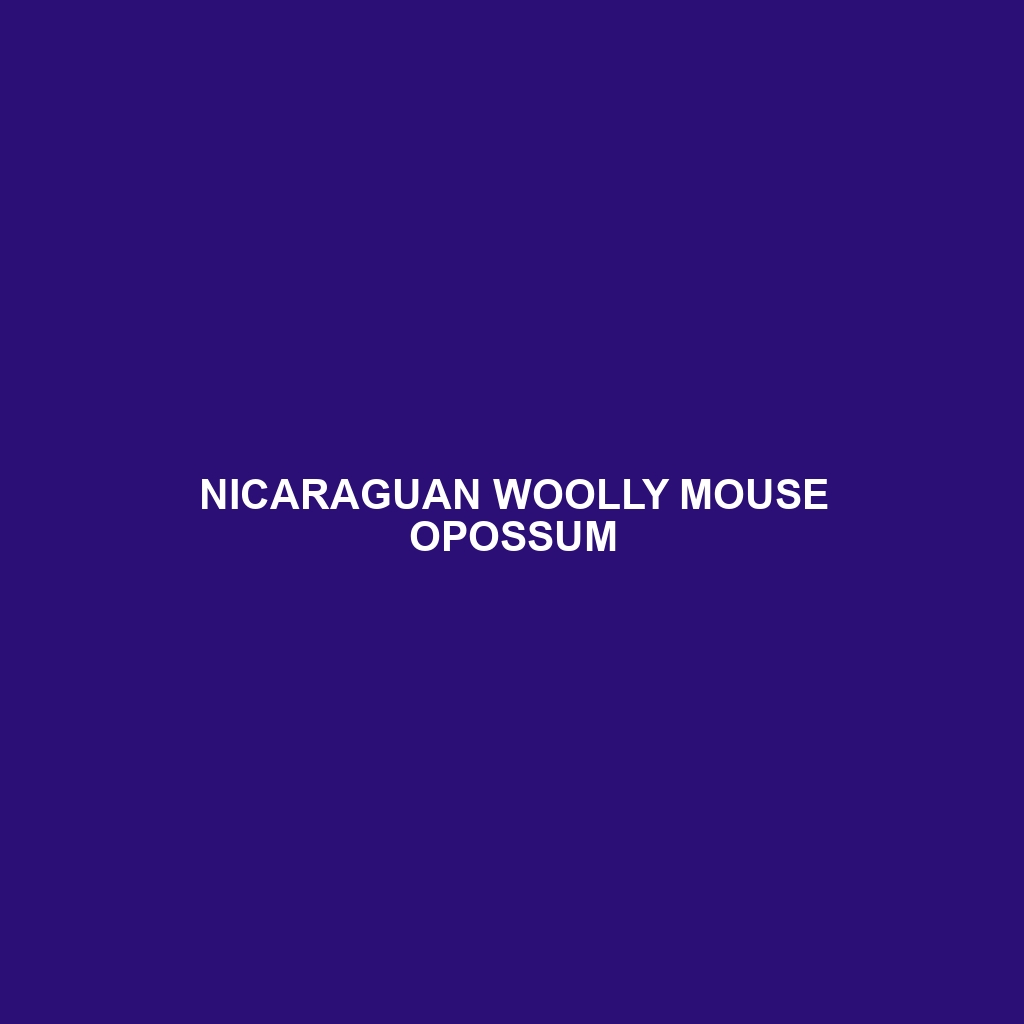Nicaraguan Woolly Mouse Opossum: A Detailed Description
The Nicaraguan Woolly Mouse Opossum (Marmosa nicaraguae) is a small, nocturnal marsupial native to Central America. Known for its soft, woolly fur and agile climbing abilities, this diminutive creature is an important part of the region’s ecosystem. Despite its unassuming size, the Nicaraguan Woolly Mouse Opossum plays a vital role in seed dispersal and insect population control.
Physical Characteristics:
Size: The Nicaraguan Woolly Mouse Opossum is a small marsupial, typically measuring around 10-15 cm (4-6 inches) in body length, with a tail that can be as long as its body or slightly longer. Adults weigh between 20-40 grams (0.7-1.4 ounces).
Coloration: Its fur is soft and woolly, as its name suggests, with a color that ranges from grey to brown on the upper parts and a lighter, often white or cream, underside. The tail is prehensile, covered in scales, and is typically darker on top and lighter underneath.
Special Features: This opossum has large, round eyes adapted for nocturnal vision and a pointed snout that aids in foraging. Its ears are large and hairless, enhancing its hearing capabilities. The prehensile tail is a vital tool for balance and grasping branches while navigating through the forest canopy.
Behaviors:
Social Interactions: Nicaraguan Woolly Mouse Opossums are primarily solitary animals, except during mating seasons or when females are caring for their young. They communicate through a series of clicks and whistles.
Feeding Habits: They are omnivorous with a diet that includes fruits, insects, small vertebrates, and sometimes nectar. Their foraging behavior helps in the control of insect populations and in the dispersal of seeds, contributing to forest regeneration.
Ecological Roles: These opossums play a crucial role in their ecosystem. As seed dispersers, they contribute to the growth of various plant species. Their predation on insects helps maintain the ecological balance, preventing overpopulation of certain insect species.
Habitats:
Natural Habitat: The Nicaraguan Woolly Mouse Opossum is commonly found in tropical and subtropical forests, including lowland rainforests and montane regions. They prefer dense vegetation that provides ample cover and opportunities for climbing.
Range: They are primarily found in Nicaragua, but their range may extend into parts of Honduras and Costa Rica.
Adaptations:
Nocturnal Lifestyle: Adaptations such as large eyes and enhanced hearing support their nocturnal habits, allowing them to navigate and forage efficiently at night.
Prehensile Tail: This adaptation allows them to grasp and hold onto branches, aiding in their arboreal lifestyle.
Camouflaged Fur: Their fur coloration helps them blend into their surroundings, providing camouflage from predators.
Conservation Status:
Current Status: The Nicaraguan Woolly Mouse Opossum is not currently listed as endangered, but like many forest-dwelling species, it faces threats from habitat destruction and fragmentation due to deforestation and human encroachment.
Conservation Efforts: Efforts to preserve tropical forest habitats are crucial for the conservation of this species. Protected areas and reforestation projects help ensure the survival of their natural habitats.
Fun Facts:
Reproduction: Female Nicaraguan Woolly Mouse Opossums give birth to tiny, underdeveloped young that continue to grow and develop in the mother’s pouch, a characteristic trait of marsupials.
Agility: These opossums are incredibly agile climbers, capable of navigating the forest canopy with ease thanks to their prehensile tails and dexterous limbs.
Nocturnal Foragers: They contribute to the pollination of certain nocturnal flowers by feeding on their nectar, thus supporting the reproductive cycles of these plants.
The Nicaraguan Woolly Mouse Opossum, with its unique adaptations and vital ecological roles, remains an intriguing and essential species within its habitat. Understanding and protecting this small marsupial is key to preserving the intricate balance of Central American tropical forests.
